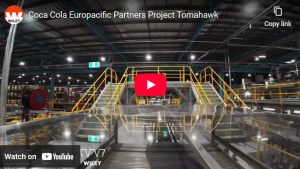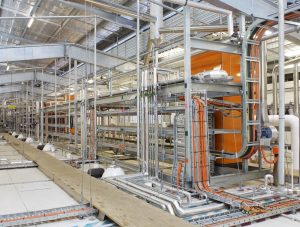The buzz and engagement of the 300 strong crowd attending last week’s 2015 Australian Meat Industry Council (AMIC) conference, suggests the answer to this question is a resounding YES!
Some of the key future issues on the agenda were maintaining quality of local produce, global demand for beef, and the free trade agreement with China with industry facing the same short list of energetic forces including the Australian dollar, labour costs, commodity prices, energy efficient technology driven by the rising price of energy, and the integration of more automation and robotics.
Kate Mills, Workforce consultant and Business Mills CEO, shared that the future workforce would feel the influence of this rise of automation with around 40 per cent of existing jobs becoming the responsibilities of robots, mainly in repetitious, less skilled and/or dangerous roles. Yet she argued that all revolutionary shifts in workforce historically create more jobs than they erase and opportunities would emerge here as well to fill the vacuum of social and specialised management skills that only humans can learn and provide.
Martin Kneebone, MD of Freshlogic , offered insights on their matrix of the consolidated influences on the food market, which depicted the three primary forces of:
- Value (desire for base value PLUS affordable quality),
- Convenience (finding the solution that fits my lifestyle) and,
- Health, provenance and sustainability, all orbiting a strong, central social media presence.
David McKinna of McKinna et al, explained how the Australian red meat industry could no longer compete on price and must instead compete on value and differentiation. This could be achieved by adopting the disciplines employed by global food manufacturing companies, including:
- Investing in brands and treating them as your most valuable asset
- Be customer facing and focus on adding value,
- Develop a secure supply chain with long-term strategies
Wiley’s Business Operations Manager for Regional Queensland Michael Matthewson explained, “One of the key megatrends in agribusiness is the increasing demand for high protein foods in Asia, driven by a growing middle class,”
According to AMIC organisers, there will be a 75 per cent rise in food demand globally by 2050 and 71 per cent of that rise will come from Asia with almost half of that from China alone.
“The China – Australia Free Trade Agreement is now before the Joint Standing Committee on Treaties as part of the ratification process in Australia. This, along with Australia’s reputation for high-quality produce will provide great opportunities for Australian farmers, producers, and manufacturers,” Mr Matthewson said.
“How Australia maintains the quality of our meat exports, when our increasing energy costs, transport infrastructure limitations and impacts from major weather trends, is a challenge that will require innovation and industry collaboration,” he said.

Panelists included David Larkin – Chair of the Australian Processor Council; Dr John Langbridge – Veterinary Counsel, AMIC; Dr Peter Barnard – MISP 4 – Economist/Consultant; Roger Fletcher – Managing Director, Fletcher International; David Lind – Chief Executive Officer, AMPC; Michael Matthewson – Business Operations Manager, Regional Qld, Wiley
Mr Matthewson, joined a group of industry specialists to discuss future trends and strategies on the ‘Securing the Future’ interactive discussion panel. This session proved a huge success and fantastic forum for the expansion of the topics and trends already shared throughout the day.
Check out some of the buzz captured live during the event below:



